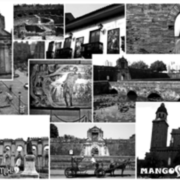The recent news of the inclusion of Fort Santiago and Intramuros to the top 10 list of the Global Heritage Fund’s most endangered historical sites can be a little alarming not just for the cultural warriors, Manilenos, but to all Filipinos. Other places include Autthaya (Thailand), Kashgar (China), Mahasthangarh (Bangladesh), Mes Aynak (Afghanistan), Myauk-U (Myanmar), Plain of Jars (Laos), Preah Vihear (Cambodia), Rakhigari (India), and Taxila (Pakistan). According to the Global Heritage Fund, there are 5 man-made threats to these sites: development pressures, unsustainable tourism, insufficient management, looting, and war and conflict.
Fort Santiago and Intramuros are places charged with the dynamic energy of our nation’s history, these two sites already experienced its share of devastation—bombardments, fires, earthquakes, and the like—and they don’t deserve to suffer any more of it.
Walls have played an important role in history. Throughout the ages, they have been built to protect and define a particular area’s territory. To an effect, they hold in together the citizenry, giving them a semblance of security, allowing life to go on with sights set on prosperity. They can be advantageous, take for example the Great Wall of China and Hadrian’s Wall. Or divisive like the Berlin Wall or religiously important like the Western Wall in Jerusalem.
The Philippine counterpart to this “wall of fame” will be Intramuros. Paying particular attention to the walls that allowed Manila to flourish, how we wish that they could talk. They will be diaphanous with hints of euphony, telling us of the heroism of our race, the anguish that we were made to suffer, and the pain that we had to endure. These walls have seen the figures of heroes, big-time and anonymous. Heard the proud cries of our native chieftains interspersed with the revolutionaries’ flurries of brilliance. They stood strong against the hails of bullets and artillery. They have witnessed the atrocities of war fueled by distorted ideologies. Throughout the years, they have learned how to forgive, and we’ve appropriated them for the workings of tourism and commerce. This is not an entirely bad thing, for we could learn something from them. Learn and appreciate layer after layer, our history, of course. On the other hand, The Fort—Santiago that is—at the time of its completion in 1593, was the defense fortress of the masterpiece that was Intramuros. Hardened by war, it was also the last space that housed Philippine National Hero Jose Rizal before he was executed in 1896.
Walls are meant to be broken. But in our case, we are allowing it to break down partly due to our negligence, and walls like this one (and Fort Santiago as well), are not meant to be taken apart.
***
Mango Tours is a provider of quality, affordable and convenient travel services that include low-priced airline tickets, customized Philippine and International Tour Packages, Cruises, Land Transfers, Passport and Visa Concerns. It is the #1 producer of reliable travel services particularly when it comes to Philippine travel arrangements to the Filipino-American community in the US Mango Tours is able to provide its customers with a number of travel options at affordable rates because of its consolidator contracts with over 11 airlines. Book your travel bookings with Mango Tours by calling its 24/7 U.S. toll-free number at 1-866-2-MANILA (1-866-2-626452). Visit www.mangotours.com to know more about its latest promos and travel offers.*






